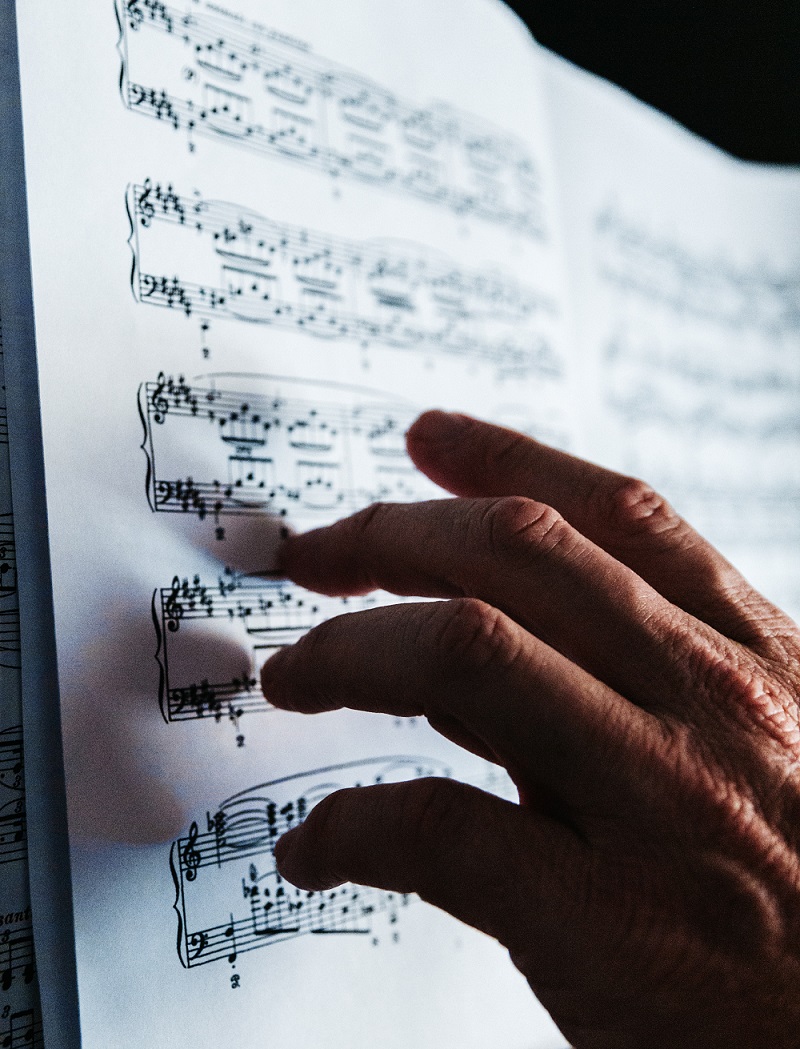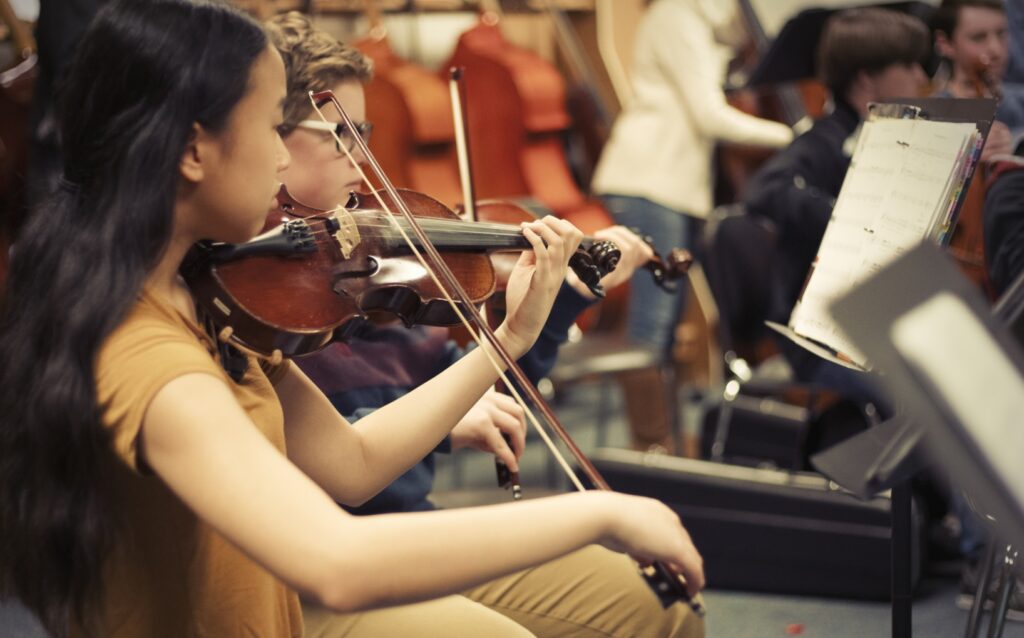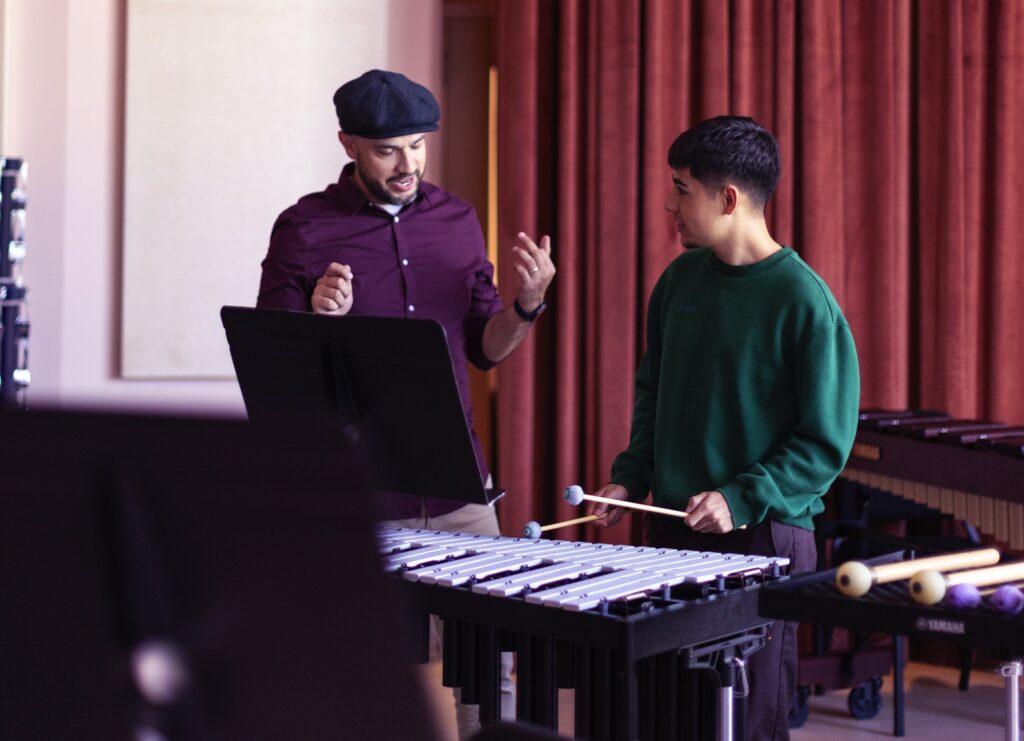Note-Naming ≠ Music-Reading
Incorporate these tips into your lessons to help students with music reading.
“The name of a note is the one thing we do not have to know, and yet some teachers spend more time on this aspect of note reading than any other,” said renowned piano teacher Richard Chronister, as noted in “Creative Piano Teaching” by James Lyke, Geoffrey Haydon and Catherine Rollin, Stipes Publishing, 2011, Pg. 55.)
Collins English Dictionary says that “if you can read music, you have the ability to look at and understand the symbols that are used in written music to represent musical sounds.” More musically put, you have the ability to audiate or hear the music in your head, and you know what technical and musical tools you need to employ to get the sound you are hearing internally.
 Why then, do so many people equate music reading with note naming?
Why then, do so many people equate music reading with note naming?
Chronister goes on to say that for pianists, “note reading is the ability to see any note on the staff and simultaneously play its corresponding key on the keyboard.” Knowing the name of the note unfortunately is a very limited piece of information and does not help with this. Nor does it help the student understand how notes are related to each other, how to recognize patterns and chords, etc.
This is a very lengthy topic, and rather than focus on the musical hierarchy of “Listening, Playing, Reading, Writing” (a topic that I will discuss in another article), which should provide the foundation for everything we teach, what I would like to focus on for now are some tips for music reading that are easy to incorporate into lessons.
Intervallic Reading
Humans can typically remember five to seven bits of information at a time. When students are focused on one note at a time, their brains get overloaded very quickly. It is much more beneficial to teach students how to chunk and how to recognize patterns. The key to both of those is through intervallic reading.
 When students are focused on note-naming, they would look at the notes to the right and say, “C, E, G.” That is three bits of information that really serve no musical purpose. When we emphasize intervallic reading, the student recognizes that these three notes, built up in skips, create a C major chord — one bit of information. The student can audiate that chord, the hand automatically knows what shape to create to play the chord and the knowledge is easily transferable to other keys.
When students are focused on note-naming, they would look at the notes to the right and say, “C, E, G.” That is three bits of information that really serve no musical purpose. When we emphasize intervallic reading, the student recognizes that these three notes, built up in skips, create a C major chord — one bit of information. The student can audiate that chord, the hand automatically knows what shape to create to play the chord and the knowledge is easily transferable to other keys.
Make Good Use of Flashcards
Raise your hand if you own flashcards (maybe multiple, colorful sets?). Now, raise your hand if you use flashcards with your students on a regular basis.
Teachers often use flashcards as a break from playing or as a vocabulary-type speed drill. Unfortunately, this offers the student no connection to their actual repertoire or music-making as a whole. What students really need to know is what piano key is represented by the notehead on the staff. For example, you might have a student who can whiz through the flashcards and get all the note names correct, but still struggle to play a single five-finger pattern line of notation or a student who can sight-read a line beautifully, but hesitates when asked the letter names.
This does not mean that you should get rid of your flashcards – absolutely not! We just need to use them in ways that help students transfer the information they are memorizing on the flashcards to the repertoire they are playing. These tips will also provide music teachers with a more accurate assessment of your students’ understanding of specific concepts.
Demonstrate: This one seems pretty obvious and simple, but we are assessing if the student actually understands the correlation between the symbol on the flashcard and what they play. Choose a few terms, rhythms or notes and have them play what is written on the card. You can make this more challenging by having students play a harmonic line at the same time. Can they remain focused on their line?
Improvise: I am a strong believer in encouraging and building students’ creativity through improvisation, but classically trained teachers are often uncomfortable teaching improvisation. Flashcards are a really easy way to incorporate improvisation or composition into lessons. As an extra benefit, improvisation is also a great way to assess what a student understands.
Choose a few flashcards to serve as guidelines. The student could choose a key signature flashcard and instead of shouting out D major, which doesn’t actually allow the teacher to assess whether or not the student understands what notes are in D major or what dominant and tonic are in D major, have the student do a short improvisation in D major. It could be as simple as root and 5th in the left hand (demonstrating understanding tonic and dominant) and right-hand improvising in a D five-finger pattern (does the student remember F#?).
You can add more guidelines, such as a specific meter (3/4, 5/8, 4/4), dynamics, terms like ritardando, rubato or andante. You can even add rhythm flashcards as a left-hand ostinato or a melodic rhythm.
Sing: Again, choose a few flashcards and lay them out for the student. This time, rather than having the student play the pattern, ask them to sing the pattern for you. The student must be audiating the pitches in order to sing them correctly.
Find: Have the student find the answers in their pieces. This takes more planning by the teacher because you need to have the appropriate flashcards chosen ahead of time, but this can really help students make the connection between flashcards, which can seem very separate from a musical activity, and their music-making.
Create: While it is very easy to buy ready-made flashcards, have students make their own cards at home. The actual process of writing down the symbols or terms and definitions or letter names can help to reinforce concepts.
Teach Students to be Independent Learners
The great pedagogue Frances Clark said, “My primary goal as a piano teacher is to create a climate in which my students can experience continual musical, intellectual, and emotional growth, and to become increasingly dispensable to them in the process.” When we focus on music-reading, rather than note-naming, we allow our students the opportunity to become independent learners and you might find that your students play more musically and are more engaged along the way.
















